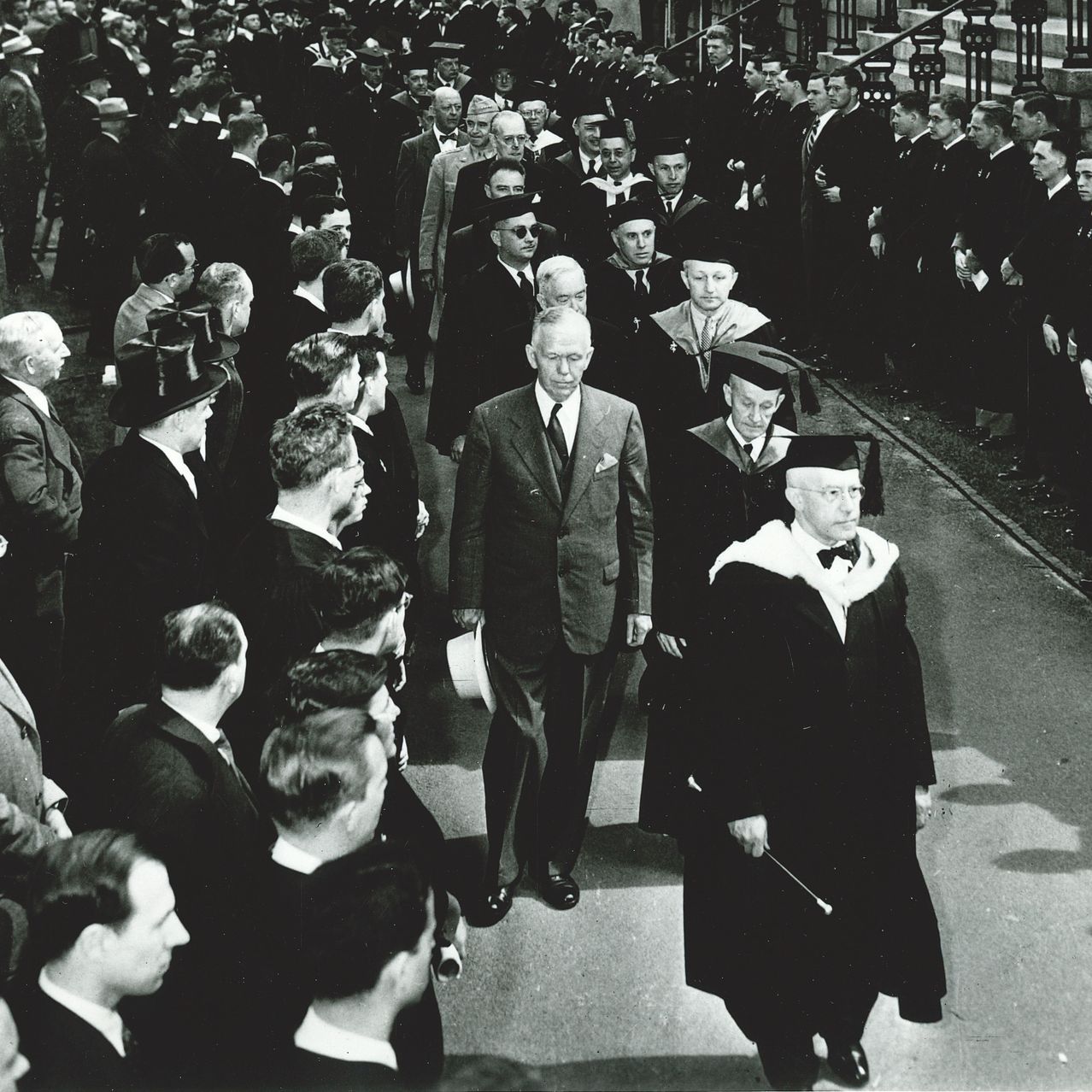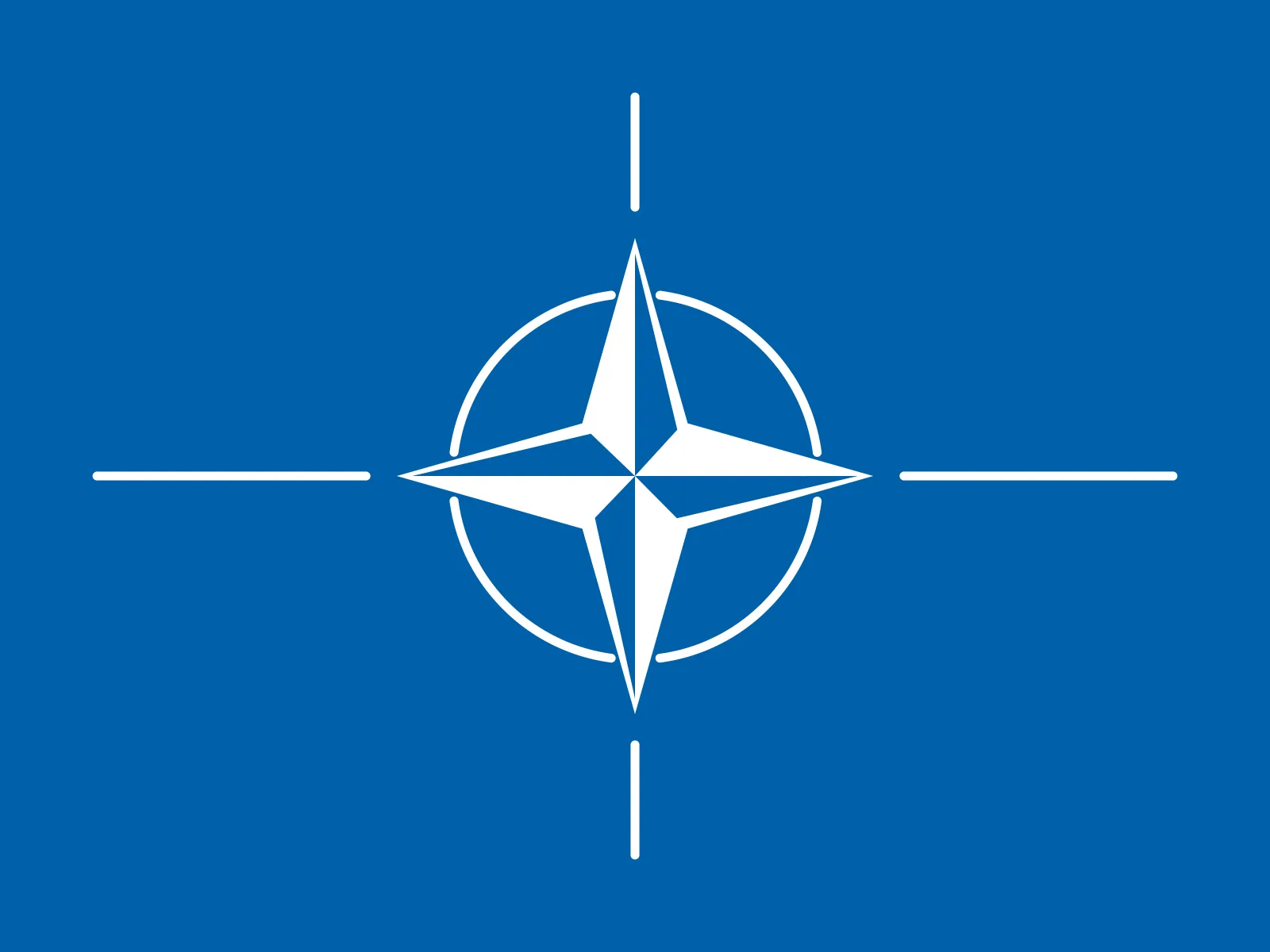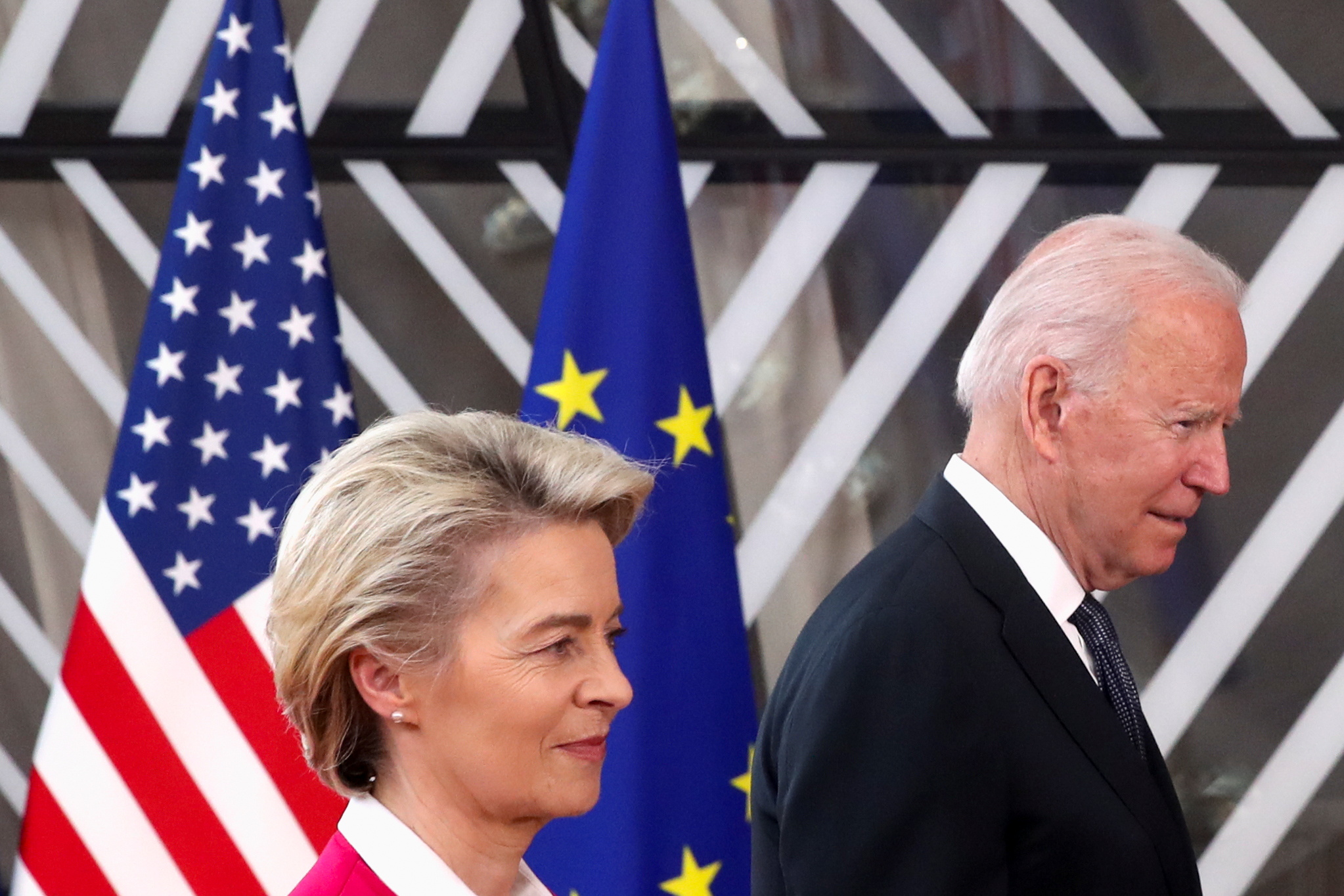The Marshall Plan - Rebuilding Europe After World War II
In the aftermath of World War II, Europe lay in ruins. The war had left millions dead, cities destroyed, and economies shattered. In this bleak scenario, the United States emerged as a global superpower and took upon itself the monumental task of helping Europe rebuild.
The Marshall Plan, officially known as the European Recovery Program, became one of the most significant initiatives in modern history, reshaping the post-war world order and fostering unprecedented economic recovery and stability. This article delves into the history, implementation, and impact of the Marshall Plan on war-torn Europe.
Europe In Ruins
In a pivotal moment in history, Secretary of State George Marshall delivered a landmark speech at Harvard University on June 5, 1947.
Recognizing the urgent need to address the dire situation in post-war Europe, Marshall put forth a visionary proposal. His speech outlined a bold initiative: European nations, ravaged by the war and struggling to rebuild their economies, were encouraged to formulate a comprehensive plan for their economic reconstruction. What set this proposal apart was the unprecedented offer of support from the United States, a nation not only willing to extend a helping hand but also to provide substantial economic assistance.
Harvard Speech
Marshall’s speech was not just a call to action; it was a catalyst for change. In those historic moments at Harvard, the Secretary of State articulated a vision of solidarity and shared responsibility. He emphasized the importance of collaborative efforts, highlighting that the recovery of Europe was not only the responsibility of individual nations but also a collective endeavor that demanded unity and cooperation.
The essence of Marshall’s proposal was twofold. First, it challenged the war-torn European nations to come together, setting aside their differences, and collectively devise a detailed plan for their economic revival. This plan, Marshall believed, should be comprehensive, addressing every facet of reconstruction – from rebuilding infrastructure and revitalizing industries to stabilizing currencies and promoting trade. It was a call for meticulous planning and thoughtful strategies, urging European leaders to envision a future beyond the ruins of the past.
Secondly, and perhaps most significantly, Marshall extended the generous hand of the United States to provide economic assistance to support the realization of this plan. The scale of this assistance was unprecedented, emphasizing the seriousness of the American commitment to Europe's recovery. This financial aid was not merely a gesture of goodwill; it was a strategic investment in peace and stability. By helping Europe rebuild, the United States aimed to prevent the spread of communism and foster a stable political and economic environment that would thwart the rise of extremist ideologies.
Marshall’s proposal was rooted in pragmatism and foresight. He understood that a strong, economically stable Europe was not only vital for the well-being of its citizens but also crucial for global peace and security. By empowering European nations to take charge of their own destinies and offering them the resources to do so, the United States set in motion a chain of events that would alter the course of history.
The speech at Harvard University marked the beginning of a new era in international relations – an era defined by cooperation, shared responsibility, and the understanding that the well-being of one nation is intricately linked to the well-being of others. The Marshall Plan, born out of this speech, stands as a testament to the power of visionary leadership and the capacity of nations to rise above adversity when united by a common purpose. In the years that followed, this initiative would not only rebuild the physical infrastructure of Europe but also sow the seeds of lasting peace, setting an inspiring precedent for future generations.
The end of World War IIin 1945 left Europe in a state of utter desolation. The once-prosperous continent was now a landscape of destruction and despair. Cities and towns lay in ruins, reduced to rubble and ashes by the relentless bombings and battles of the war. The scale of devastation was staggering, with iconic landmarks turned to debris and homes reduced to remnants of their former selves.
In addition to the physical destruction, Europe faced a severe shortage of essential resources. Factories that once churned out goods and products to sustain economies were now silent, their machinery destroyed or taken away for the war effort. The agricultural sector, too, was severely affected, leading to food shortages and hunger in many regions. The scarcity of resources was not limited to material goods alone; there was also a scarcity of hope, as people struggled to imagine a future amid the ruins of their past lives.
The human cost of the war was immeasurable. Millions of people had lost their lives, and many more were displaced from their homes. Families were torn apart, and communities were shattered. The social fabric that held societies together was torn, leaving behind a sense of loss and disorientation. The immediate post-war period was marked by a refugee crisis, with countless individuals and families seeking shelter and safety, often in makeshift camps with inadequate living conditions.
Amidst this backdrop of devastation and despair, there was a growing fear of political instability. The rise of communism, particularly in Eastern Europe, posed a significant threat. The Soviet Union, emerging as a superpower after the war, sought to expand its influence and ideology.
Western European nations, still reeling from the effects of the war, were vulnerable to the allure of communist ideas promising stability and equality. The need for immediate aid was not only a humanitarian necessity but also a strategic imperative. The United States recognized that providing assistance was crucial to prevent the spread of communism in Europe, safeguarding the continent from falling entirely under the influence of the Soviet Union.
Implementation And Objectives
With the dire situation in post-war Europe demanding urgent action, the Marshall Plan swiftly moved from proposal to implementation.
From 1948 to 1952, a period critical for the continent's recovery, the plan allocated a substantial sum of over $12 billion, an astronomical figure at the time and equivalent to approximately $130 billion in today’s currency, to 16 European countries. This financial injection was not just aid; it was a lifeline, a catalyst for change that would breathe life into shattered economies and ignite the spark of hope among millions.
Restoring Industrial And Agricultural Production
At the heart of the Marshall Plan's objectives was the revitalization of industries and agriculture. Factories, which had stood silent in the aftermath of the war, roared back to life. Production lines that had once manufactured weapons of destruction now produced goods for reconstruction and growth.
Skilled and unskilled laborers found employment, and the industrial heartbeat of Europe quickened. In the agricultural sector, modern techniques and equipment were introduced, increasing efficiency and output. Fields, once battlegrounds, were now cultivated, providing sustenance for a hungry population.
The renewal of industrial and agricultural sectors not only mended the economic fabric of nations but also instilled a renewed sense of pride and purpose among the people.
Promoting Trade And Economic Collaboration
The Marshall Plan recognized the importance of interconnected economies. By promoting trade among European nations, the plan encouraged collaboration and synergy. Borders that had been barriers were now bridges for the exchange of goods and ideas.
Cross-border trade not only stimulated economic activity but also fostered a spirit of unity and cooperation among nations that had been torn apart by war. The plan encouraged the establishment of economic partnerships, laying the groundwork for the future European economic integration.
Stabilizing Currencies And Fostering Confidence
In the chaotic aftermath of the war, currencies were volatile, leading to economic uncertainty. The Marshall Plan intervened decisively, stabilizing currencies and creating an environment of financial predictability. Stable currencies were not just numbers on paper; they represented stability and faith in the economic future. As confidence in financial systems was restored, both domestic and international investments flowed into European economies. This newfound stability acted as a cornerstone for future economic growth, attracting investments that funded innovation, infrastructure, and education, paving the way for long-term prosperity.
Establishing A Foundation For Sustainable Growth
Ultimately, the Marshall Plan was not just about short-term recovery; it was about laying the foundation for sustainable, long-term economic growth. By restoring industries, promoting trade, and stabilizing currencies, the plan created an environment conducive to innovation, entrepreneurship, and development. The plan empowered European nations to stand on their feet once again, fostering self-reliance and resilience. It planted the seeds of economic stability, which would later blossom into the remarkable period of growth and prosperity witnessed in Europe during the post-Marshall Plan years.
What Did The Plan Accomplish?
In the annals of economic recovery, the Marshall Plan stands as a beacon of hope, illuminating a path from the ruins of war to the promise of stability and prosperity. This ambitious initiative, proposed by Secretary of State George Marshall in his historic speech at Harvard University in 1947, aimed at preventing the spread of communism and fostering the development of a robust global economy.
The Marshall Plan articulated several clear objectives, each designed to rebuild shattered nations and revive the spirit of Europe. Among these objectives was the expansion of European agricultural and industrial production. Factories, once silent, roared back to life, producing goods that not only met domestic needs but also found markets around the world. The plan sought to restore not just industries but also a sense of purpose among the people, empowering them to rebuild their lives with dignity and resilience.
A crucial aspect of the Marshall Plan was the restoration of sound currencies, budgets, and finances in individual European countries. Stability in financial systems was not just a matter of numbers but a foundation of confidence. With stabilized currencies, both domestic and international investments flowed into Europe, fueling innovation and growth. This financial stability was a cornerstone upon which nations could rebuild their economies, attracting investments that funded essential infrastructure projects, including roads, power plants, housing, and airports.
International trade was also a key focus of the Marshall Plan. By encouraging trade among European countries and between Europe and the rest of the world, the plan fostered economic collaboration. Borders, once barriers, became gateways for the exchange of goods and ideas. This collaboration not only stimulated economic activity but also nurtured a spirit of unity among nations. Many historians regard the Marshall Plan as a foundational step toward the integration of European countries, envisioning a "United States of Europe" similar to the model of the United States itself.
Implementation of the Marshall Plan was overseen by two agencies: the U.S.-managed Economic Cooperation Administration(ECA) and the European-run Organization for European Economic Cooperation. The ECA provided grants to countries, which were matched with their own currency, creating counterpart funds. These funds were then utilized for vital infrastructure projects, including utilities, transportation, communication facilities, manufacturing, and agriculture. The Plan not only rejuvenated economies but also reduced debt burdens, creating a stable fiscal environment essential for growth.
Moreover, the Marshall Plan facilitated technical training in U.S. production methods. Thousands of Europeans traveled to the U.S. to learn techniques for increasing production and stability. This exchange of knowledge and expertise bridged the gap between continents, fostering collaboration and mutual understanding.
The Marshall Plan's impact extended far beyond economic revival; it sowed the seeds of unity and cooperation, shaping the future of Europe. Many of the participating European nations signed defense treaties, laying the groundwork for organizations like NATO. Additionally, a portion of the counterpart funds was used to develop raw material sources worldwide, enhancing global economic interdependence.
In the context of rebuilding bridges, both metaphorically and physically, the Marshall Plan serves as a testament to the transformative power of international cooperation and strategic investment. By providing not just aid, but also vision and hope, the Plan paved the way for Europe's recovery, fostering a stable, integrated continent. This remarkable chapter in history showcases the potential for solidarity and collaboration to rebuild nations, rekindle economies, and create a world bound together by shared prosperity.
Explore more about historic river cruises in Europe, sailing under bridges that symbolize unity and progress.
Examples Of Marshall Plan
The Marshall Plan, enacted between 1948 and 1952, was a visionary initiative aimed at preventing the spread of communism and fostering a healthy global economy. To achieve these goals, several key objectives were outlined:
1. Expansion of Agricultural and Industrial Production:The plan focused on reviving Europe's agricultural and industrial sectors. Factories and fields, once silenced by the war, were reinvigorated, stimulating economic growth and providing employment.
2. Restoration of Sound Financial Systems:The plan sought to stabilize currencies, budgets, and finances in European countries. This stability was essential for attracting investments and fostering economic confidence.
3. Encouragement of International Trade:By promoting trade both within Europe and with the rest of the world, the Marshall Plan aimed to foster economic collaboration. Borders became gateways for the exchange of goods and ideas, promoting unity and cooperation among nations.
Implementation of the Marshall Plan was overseen by two agencies: the U.S.-managed Economic Cooperation Administration (ECA) and the European-run Organization for European Economic Cooperation. The ECA provided grants to countries for commodities and services, with recipient nations matching these grants with their own currency. The counterpart funds thus created were utilized for infrastructure projects, including roads, power plants, housing, and airports, all vital for the recovery process. Projects had to be approved by the ECA, ensuring their alignment with the plan's objectives.
The impact of the Marshall Plan was multifaceted. It played a pivotal role in the integration of European countries, setting the stage for the formation of a united Europe. Many participating nations signed mutual defense treaties, such as the Brussels Treaty of 1948, laying the foundation for the later establishment of NATO.
In Great Britain, counterpart funds were used wisely: $2 billion were allocated for debt reduction, while $4.8 billion were invested in infrastructure projects. These investments were diverse, with 39% going to utilities, transportation, and communication facilities, 14% to agriculture, 16% to manufacturing, 10% to coal mining and extractive industries, and 12% to low-cost housing facilities.
Additionally, the Marshall Plan facilitated technical training in U.S. production methods. Over 6,000 Europeans traveled to the U.S. to study methods for increasing production and stability. This exchange of knowledge not only enhanced productivity but also fostered a spirit of collaboration and understanding between nations.
Was The Marshall Plan Effective
The Marshall Plan, implemented between 1948 and 1952, stands as one of the most successful and impactful economic recovery programs in modern history. Designed to rebuild war-torn Europe, prevent the spread of communism, and foster a stable global economy, the Plan achieved its objectives with remarkable effectiveness.
1. Economic Recovery And Growth
The most visible and immediate impact of the Marshall Plan was the economic recovery of European nations. The infusion of financial aid revitalized industries, reconstructed infrastructure, and stimulated agricultural production. Factories that had stood silent were revived, creating jobs and boosting consumer confidence. The Gross National Product (GNP) of recipient countries surged, laying the foundation for sustained economic growth.
2. Prevention Of Communist Expansion
One of the primary goals of the Marshall Plan was to prevent the spread of communism. By promoting economic stability and prosperity, the Plan provided a viable alternative to the communist ideology that was gaining ground in war-ravaged nations. The economic security offered by the Plan played a significant role in curbing the appeal of communist parties in Western European countries.
3. Integration And Cooperation
The Marshall Plan encouraged collaboration and cooperation among European nations. By fostering international trade and economic partnerships, it laid the groundwork for European integration. The Plan contributed to the signing of mutual defense treaties, such as the Brussels Treaty of 1948, and paved the way for the establishment of organizations like NATO. This collaboration not only ensured peace but also promoted unity among nations that had been adversaries during the war.
4. Long-term Impact
The effects of the Marshall Plan were not short-lived. The stable economic foundation it provided enabled European countries to invest in education, research, and infrastructure, fostering innovation and long-term growth. The Plan's emphasis on modernization and industrial development propelled Europe into an era of sustained economic progress, setting the stage for the prosperous post-war decades.
5. Soft Power And Global Influence
Beyond its economic impact, the Marshall Plan enhanced the soft power of the United States. It showcased American generosity and commitment to international welfare, reshaping global perceptions of the United States. The Plan elevated the U.S. to a position of influence in international diplomacy, fostering goodwill and strengthening alliances.
Marshall Plan - FAQs
Was Marshall Plan Successful?
Marshall Plan was undeniably successful. It played a pivotal role in the economic recovery of war-torn Europe after World War II. By providing substantial financial aid, the Plan revitalized industries, restored infrastructure, and stimulated economic growth in European countries. It prevented the spread of communism by offering a viable economic alternative, fostering stability, and promoting cooperation among nations. The Plan's long-term impact is evident in the prosperous post-war decades that followed, shaping the economic and political landscape of Europe and promoting global stability.
What Countries Accepted The Marshall Plan?
Sixteen European countries accepted the Marshall Plan. These nations included Austria, Belgium, Denmark, France, West Germany, Greece, Iceland, Ireland, Italy, Luxembourg, the Netherlands, Norway, Portugal, Sweden, Switzerland, and the United Kingdom. Each of these countries received aid to varying extents, depending on their economic needs and recovery requirements.
Who Proposed The Marshall Plan?
The Marshall Plan was proposed by George C. Marshall, who was the United States Secretary of State at the time. Marshall outlined the plan in a speech delivered at Harvard University on June 5, 1947. His vision was to provide substantial economic assistance to help European nations recover from the devastation of World War II and prevent the spread of communism in the region. Marshall's proposal marked the beginning of one of the most significant international aid programs in history, reshaping the post-war world order and fostering economic recovery and stability in Europe.
Conclusion
The Marshall Plan remains a beacon of hope in the annals of history, symbolizing the resilience of the human spirit and the potential for positive change even in the face of the most devastating circumstances. By helping Europe back on its feet, the United States not only rebuilt nations but also reshaped the course of history, setting the stage for a more interconnected, peaceful, and prosperous world.




